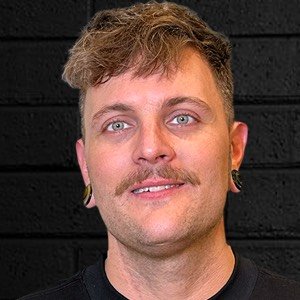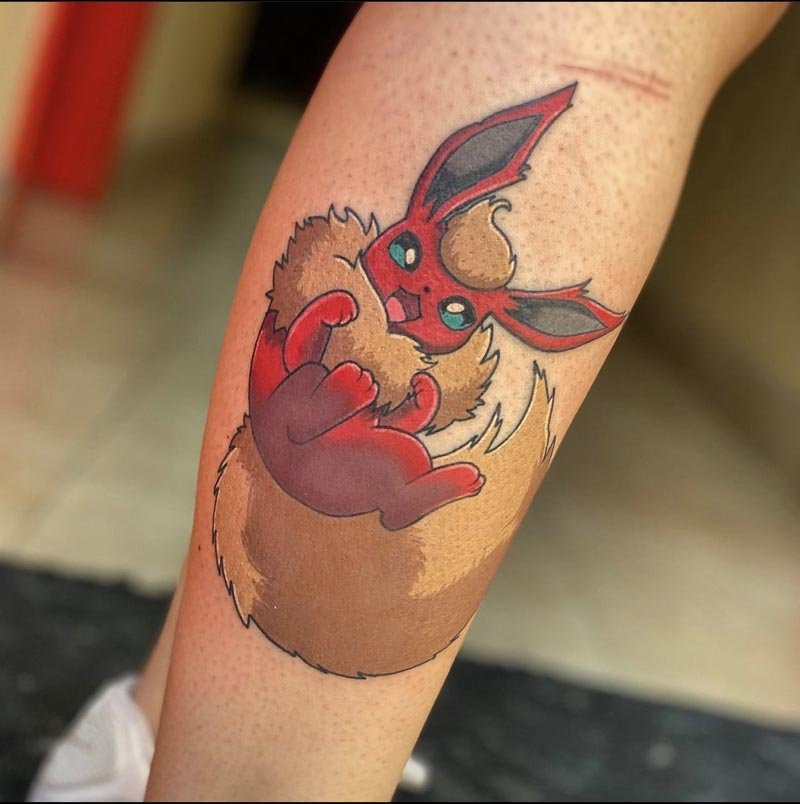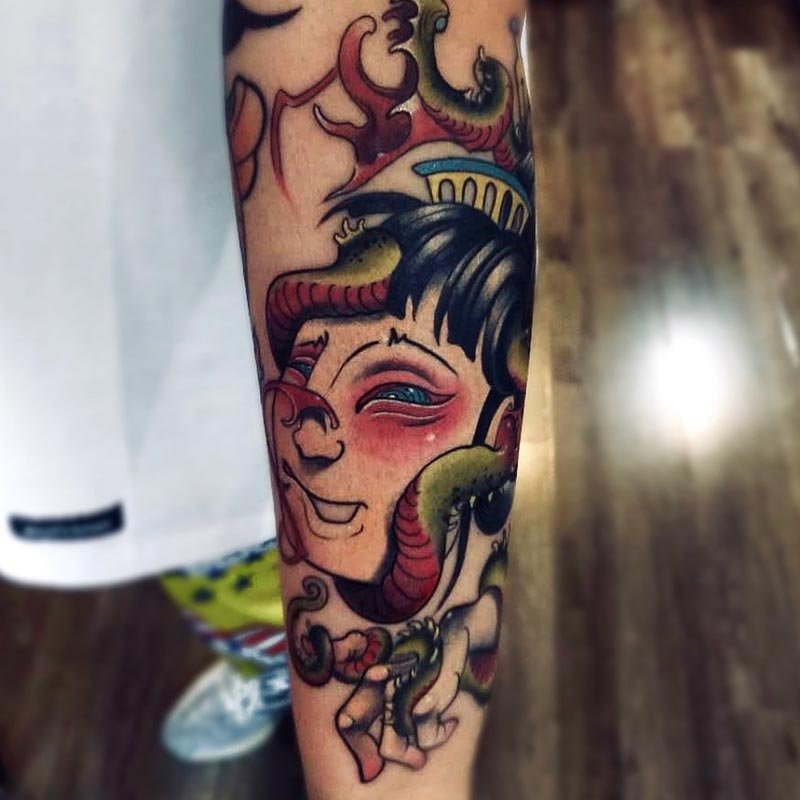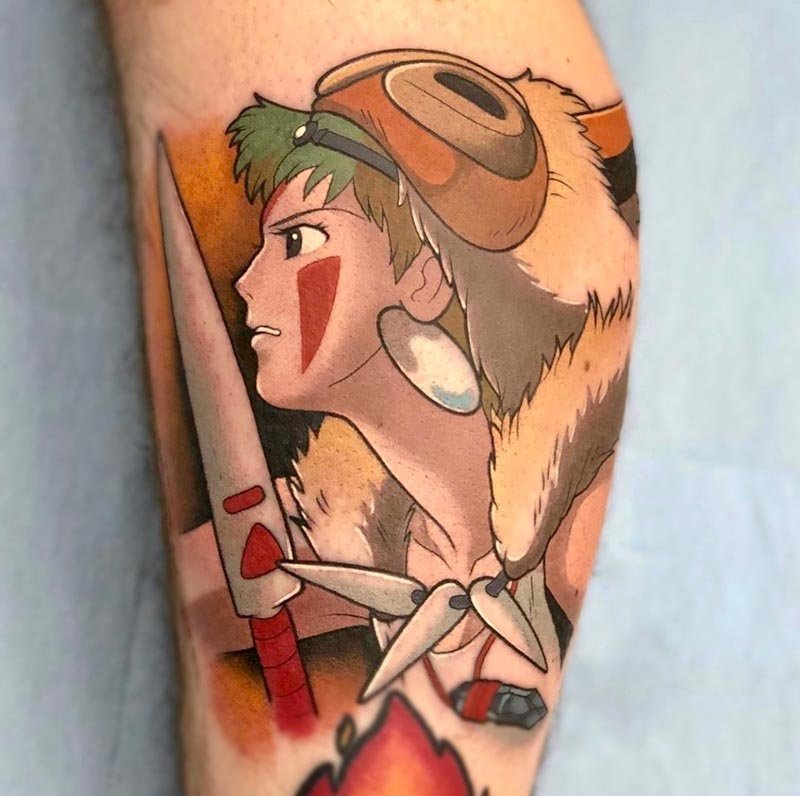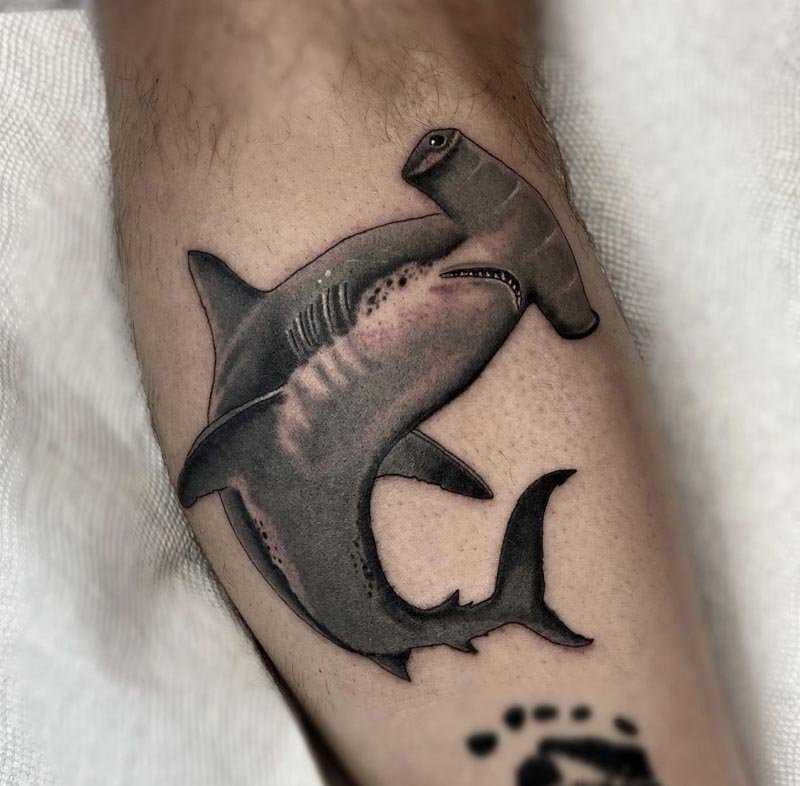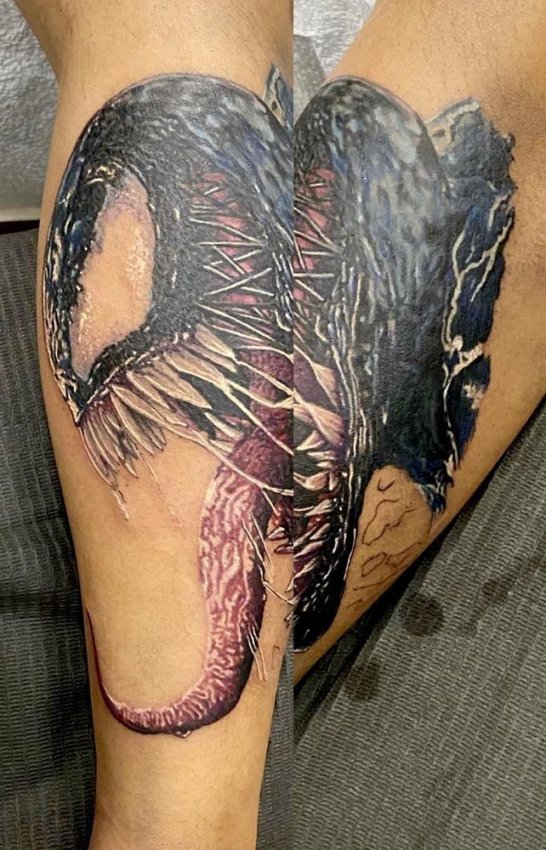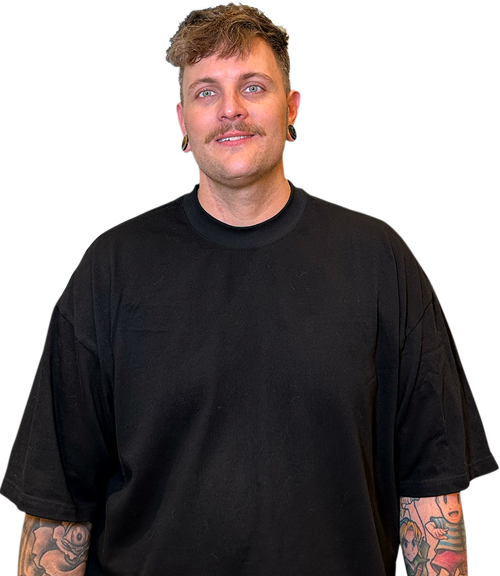Raised in the neon-lit city of Las Vegas, Toby James emerged into the world. But, in the '90s, his dad landed a job on the West Coast, so they packed their dreams in a suitcase, trading desert dust for the graffiti-clad streets of Los Angeles. While Toby was a seasoned painter, his new environment served as a platform to take his art public—in a judgment-free zone.
Because of all the gangs where I lived, there was a lot of graffiti. That's the first time I ever did any public art displays in graffiti style. It was cool because I could do some things anonymously and see what people thought. As a young artist, you fear the judgment and imperfections of your art, but with graffiti, I could put my work out there and see what people thought of it without my feelings getting in the way.
He credits his mentor Jackie for teaching him the ropes, not just about tattooing, but about life.
My first mentorship was pretty basic, and it kinda sucked. Then, I got picked up by Jackie, who only did New School-style tattoos. She was super cool and had a huge following on Instagram. She was doing the tattooing that I wanted to do. I got more from her in 3 months than I got out of my bull shit apprenticeship in a year.
Toby followed Jackie around the country from convention to convection, working every day, racking up the experience.
Even though Jackie and her boyfriend were only about five years older than me, they were like my parents at the time. They looked out for me and taught me about finances as a tattooer—they taught me how to live my life as an artist.
Although Toby didn’t have many finances to work with at the time. But damn, if he didn't soak up some valuable life lessons.
To be a 25-year-old man and not have money—things sucked.
It was really embarrassing, too. I was used to having money from working, and then I had to put all my time into tattooing. I was a super broke man; that was tough. But there's an old saying, "If you give it all to tatting, it will give it back times five." And that happened to me, so I can confirm it's true.
Toby not only saw tattooing through, he turned it into a successful career, transitioning through different styles until he found his own niche.
I mostly did Realism or digital cartoons. When I started tattooing for Jackie, she only did Disney, so it started a niche for me—Pokemon. I love Pokemon, and it was really similar to my mentor's style, so it was easy to take what she was teaching me and implement it successfully. As I get older, I try to pull out of the niche and simplify because trends change, but Realism is forever.
Realism will never be a trend.
And for the "judgers," there's not much they can say about Realism; it is or it isn't, and that doesn't leave much room for artistic debate.
I am lucky to work with Damian because he is the most rad human ever and a sick Realism tattooer. He has already taught me more than I thought possible.
Working with artists like Damian at Hart & Huntington set the bar for Toby, and that's a good thing.
I am stoked about Hart & Huntington because most of the people who tattoo here are better at art than I am. That is incredibly beneficial because it means this is a place to grow, not just a place to exist.
The caliber of artists at Hart & Huntington was a huge selling point for Toby.
I'm logical. I've tattooed in big cities, but the first thing I do when I go to cities is to Google a tattoo shop. The first two or three that come up are the best, and they have the best marketing. That said, tattoo shops with the best marking usually have the best walk-ins. As a young tattooer, the walk-in clientele is where it's at. But I really treat walk-ins like they have an appointment. That's how I was taught; that's how I operate.
When Toby returned to Las Vegas, he knew he wanted to settle at Hart & Huntington.
I wanted to be at H&H because of the foot traffic. I met BJ [manager], who knows the owner of the shop I was coming from in Hollywood. BJ is a regular person, not some corporate animal, and that sold me.
I've worked in a lot of places, and Hart and Huntington feels like an actual tattoo shop in the corporate world. It doesn't feel like a place in a mall.
Hart & Huntington proved to be a far, far cry from Toby's first run-in with tattoos.
I was on the school bus with all the kids in my neighborhood. There was this one girl and her brother who had tattoos. I remember thinking, 'Where the **** did you get tattoos?' I don't even remember what the tattoos looked like. The quality was probably terrible. She told me her uncle had just got out of prison, and he did tattoos. For some reason, I thought that was a great idea at the time—to go and get tattooed by this ******* weird guy, and so that happened!
Yeah, that tattoo has long been covered up. And it would be some time before Toby dove back in.
But it wasn't until years later—I'm talking, I was 25 when I started apprenticing, so there is a huge disconnect. Maybe it was because the quality was so shitty, and I thought that was how all tattoos were.
Luckily, not all tattoos are created equal. So, what advice would Toby give someone getting a tattoo other than to steer clear of the rando uncle who just got out of prison?
Think long-term. How are you going to feel about that tattoo 5 years from now?
I have done so many upside-down tattoos for people. Even after trying to talk them out of it, they swear in the moment that they want an upside-down tattoo. But that's so short-sighted. I see this happen over and over again. Realize that for 99% of your life, your arm is going to be in the resting position. Everybody is gonna see this upside-down script of a name and be like, 'Why do you have an upside-down name on your arm?' And it's going to drive you crazy.
If you want more advice about upside-down tattoos or if you want a really, really KILLER Realism, Pokeman, or any other imaginable tattoo, set up a consultation with Toby. We promise you won't be disappointed.
